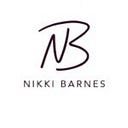Week 2 | Annotations, Preliminary Selections, Conferences, oh my!
This week I worked on the website review, preliminary selections for the Pathways video series, and made some headway with the readings in LGBTQ histories and historiographies.
[Read my Introduction to this summer 2021 project here | Follow my work with LGBTQ History Museum of Central Florida: Intro/Week 1 | Week 3 | Week 4 | Week 5 | Week 6.]
ANNOTATIONS
Kirste, Lynne. “Collective Effort: Archiving LGBT Moving Images.” Cinema Journal, 46, Number 3, Spring 2007, pp. 134–140.
Kirste defines queer content as “made by queer filmmakers, and/or perceived as queer by audiences,” and in addition I would add depicting queer subjects (134). The primary goal is to “safeguard queer cultural heritage from being ignored, misprepresented, censored, lost, and destroyed” (135). She discusses the extensive challenges to collecting and preserving these works, both amateur and professional, as well as the difficulties in sustaining accessible archives. The arguments here are scaffolded as the goals and needs for building these places and processes. The establishment of these repositories, and the necessary coding and tagging data, serve to contextualize and interpret the often-erased histories of queer lives in the United States and beyond. They can even serve as queer sites / envioronments for research, academic and otherwise. The major pillars for this ongoing work are environment, context, material, and story, and the key is access.
Romesburg, Don. “When Historians Help Make History: California’s Groundbreaking New K-12 Framework.” Perspectives on History. 3 Oct. 2016.
Romesburg details his 2011 experience in the field of US public education advocacy as a contributing historian for a California state curriculum built to include “roles and contributions of LGBT Americans.” He justifies his own expertise in the field “because the lenses of gender and sexuality a categories of analysis are central to a fuller understanding of history, [and] gender- and sexuality-informed historical analysis is essential to how we all, as informed citizens in a complex democracy, frame our understanding of the present and strategize for the future.” He co-edited a document to add LGBT history content to grades 2, 4, 5, 8, and 11. The rest of this online article includes details about the collaborative and overseen process of working within legislated guidelines for accomplishing curriculum mandates.
COLLECTIONS SURVEY + ANNOTATIONS / LIBRARY
I began my survey of the collections of the LGBTQ History Museum of Central Florida by surveying the official website and building a sitemap (below). The digital items are numerous: 8760 items in 117 Digital Collections, and five Personal Collections, 4 Oral Histories (and more in post-production), and more than 9500 images in the Photo Archive, as well as 12 videos shared via a YouTube channel.
As I explored the items via this mapping process, it became evident that a searchable topic (or keyword) structure is needed, as well as thorough annotations on the categories and items.
WEBSITE NOTES
Missing 501(c)3 notice
Social media needs to be prominent, featured, current, and compelling. The LGBTQ History Musem of Central Florida maintains accounts on Twitter (@HistoryLGBTQ), a Facebook group (www.facebook.com/groups/lgbtqhistory/), Instagram (@lgbtqhistorymuseum.cfl), and YouTube (@floridalgbtqmuseum).
PRELIMINARY SELECTIONS FOR VIDEO SERIES
- [Your Materials / How to Donate]
- Joy MCC
- Bruce Ground + Out and About Books, Part 1 + 2, with oral history (not yet uploaded)
- Parliament House
- Orlando Gay Chorus
- Pride (something)
- The Center Fold
- Something YouTube
- Watermark
- Something political advocacy, legislative, etc.
- Headdress Ball
- Jacket ?
CONFERENCE DIRECTIONS + POSSIBILITIES
Invisible Histories | https://invisiblehistory.org/
From their website: “Designed to be a repository for the preservation of the history of LGBTQ life first in the state of Alabama and then the entire Southeast.”
They are actively accepting donations of materials for their collection. After completing the video series, this will be an appropriate opportunity for submitting content.
Inclusive Historian’s Handbooks (NCPH) | https://inclusivehistorian.com/about/
From their website: “This dynamic reference source supports inclusive and equity-focused historical work in public settings by sharing a knowledge base that invites more people to engage in history projects. This handbook provides concrete examples of how to make history work more relevant. It centers on equity, inclusivity, diversity, and public service while offering accessible windows into the many ways public historians work.”
They are actively accepting donations of materials for their collection. After completing the video series, this will be an appropriate opportunity for submitting content.
NCPH | https://ncph.org/conference/2022-annual-meeting/calls-for-proposals/
2022 Meeting, “Crossroads” | 15 July 2021 CFP deadline
From their website: “As public historians, our work is critical in defining turning points, meaningful direction, and inspiring movement on paths toward progress…Sharing borders with the US, Canada is an ideal locale to anchor discussions related to raising marginalized voices in reimagined narratives. This annual meeting will help create opportunities to reckon with and repair historical relationships, design experiences that enable groups to celebrate differences and similarities, and build tools and sustainable methods.”
This will be an ideal opportunity for proposing a session (as a team), individual presentation, or poster with this video series. I am quite enthusiastic about this opportunity to contribute to the discourse in this environment.
